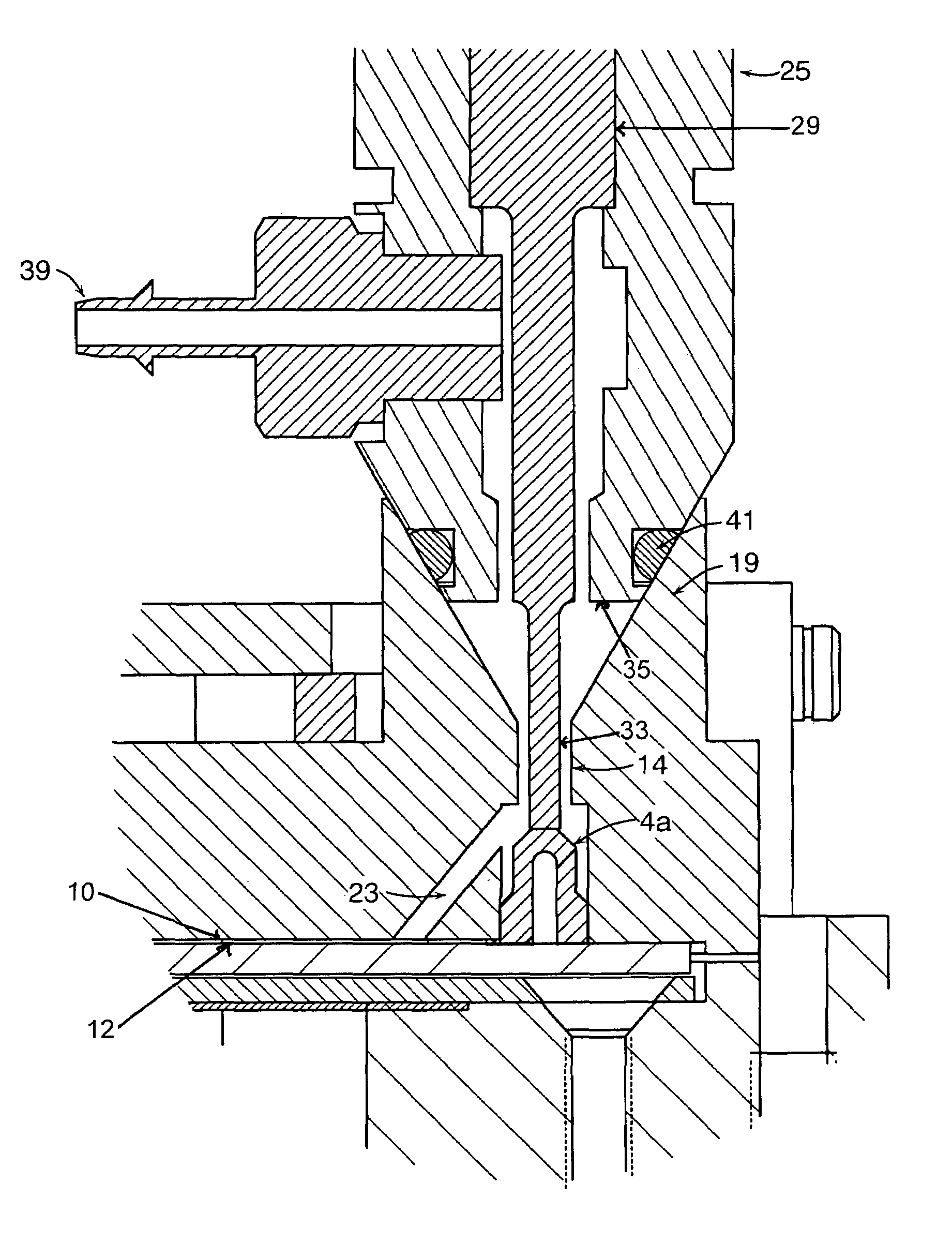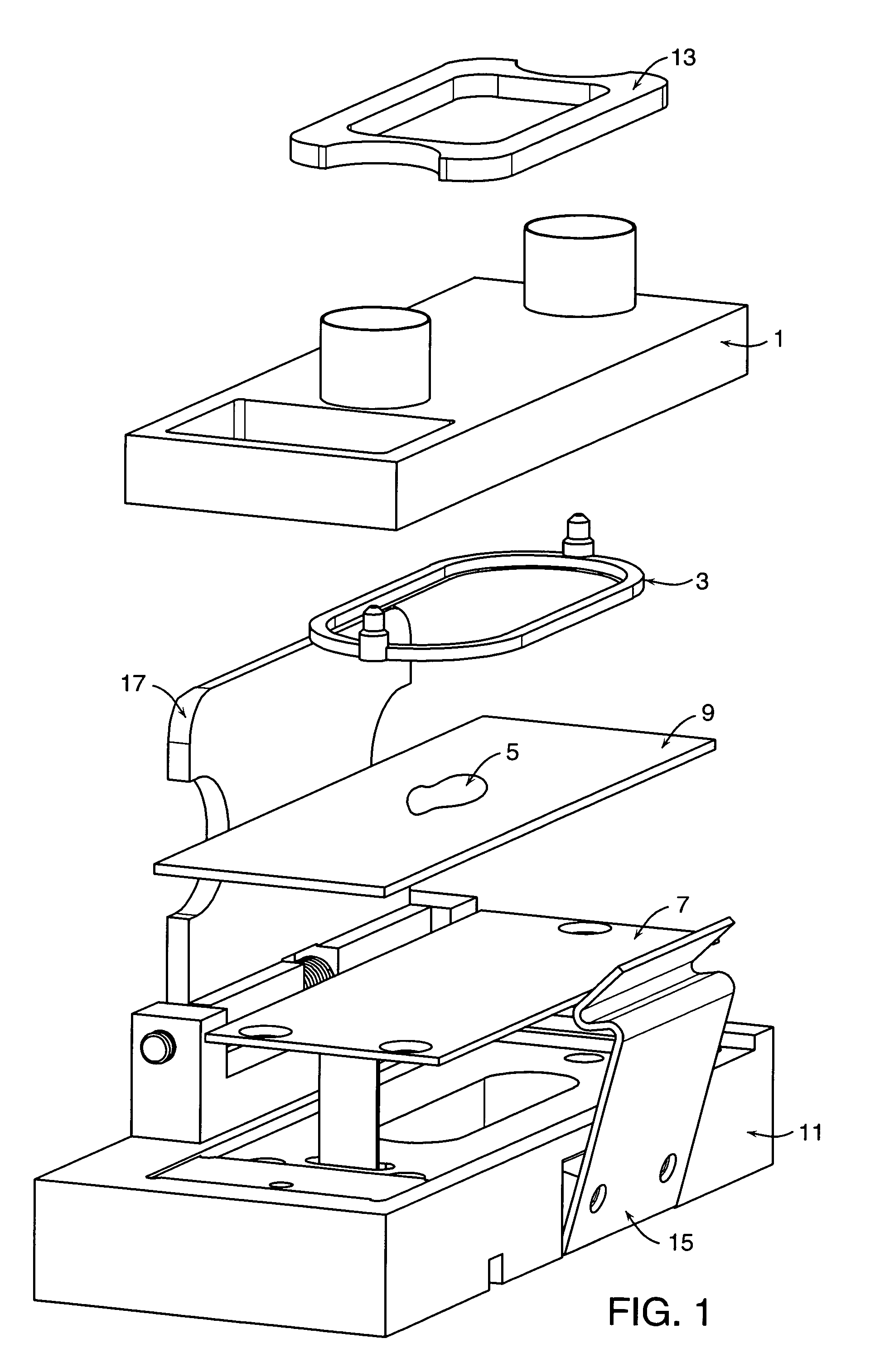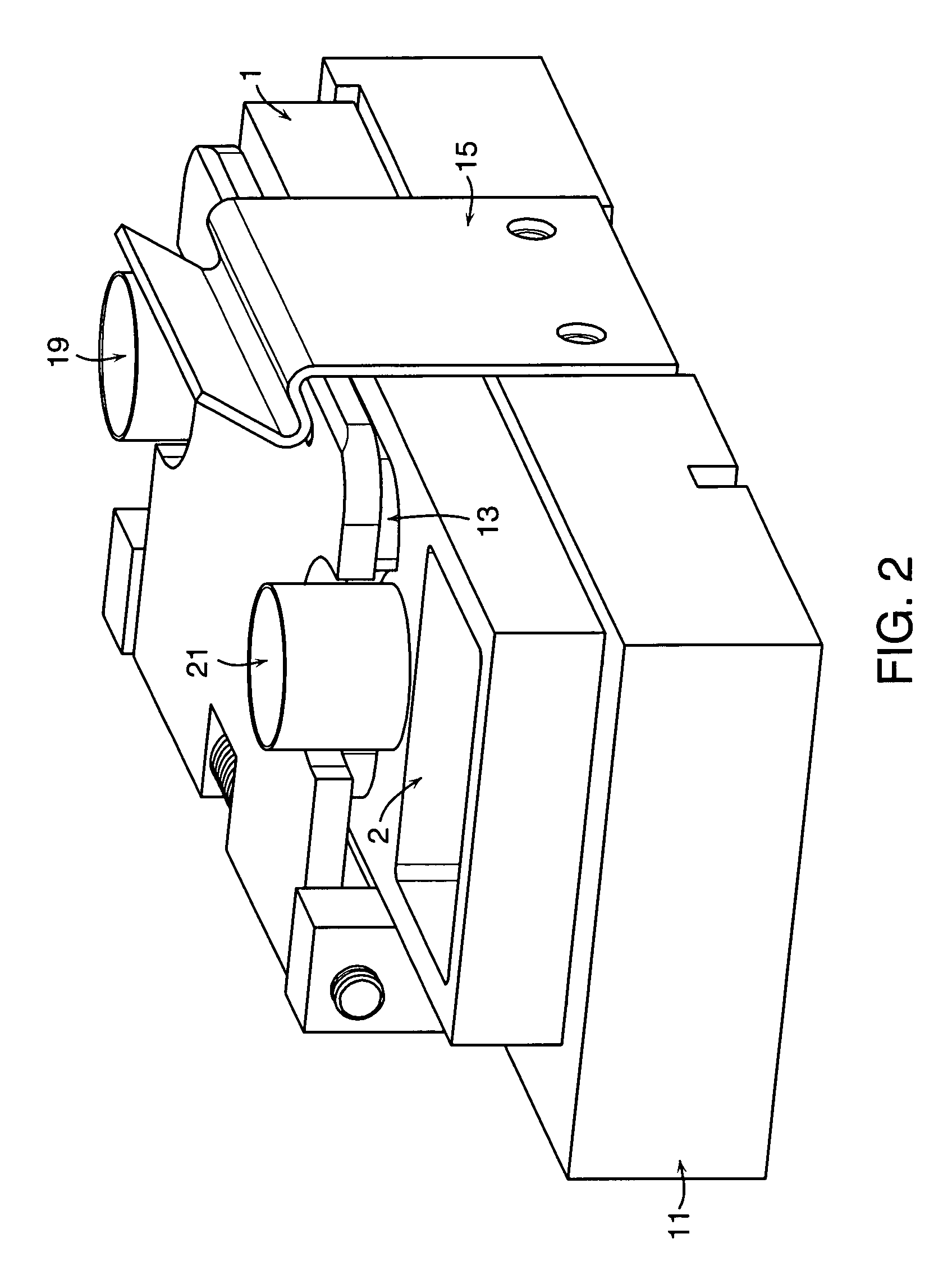Fluid exchange in a chamber on a microscope slide
a technology of microscope slide and chamber, which is applied in the field of instruments, can solve the problem that the chamber is normally not accessible to the outside environment, and achieve the effect of preventing evaporation
- Summary
- Abstract
- Description
- Claims
- Application Information
AI Technical Summary
Benefits of technology
Problems solved by technology
Method used
Image
Examples
Embodiment Construction
[0043]A description of preferred embodiments of the invention follows.
[0044]FIG. 1 shows an exploded view of a complete slide nest assembly. The assembly was designed as an “ISH cell”, “ISH” standing for in situ hybridization; however, it can be readily applied to other applications such as outlined in the Background. The ISH cell is comprised of a plastic cover 1 and a molded gasket 3. The gasket 3 fits into a groove (not shown) on the underside of the plastic cover 1. The ISH cell is positioned on top of a microscope slide 9 that bears a biologic sample 5 mounted on the surface of the slide. The microscope slide 9 rests on a heater plate 7. The heater plate is mounted, with screws (not shown), into a slide nest base 11. A resistive heating element (not shown) is attached to the underside of the heater plate 7. The heater plate thereby protects the electrical heater from any liquids that might spill. More importantly, the heater plate 7 diffuses the heat that emanates from the heat...
PUM
 Login to View More
Login to View More Abstract
Description
Claims
Application Information
 Login to View More
Login to View More - R&D
- Intellectual Property
- Life Sciences
- Materials
- Tech Scout
- Unparalleled Data Quality
- Higher Quality Content
- 60% Fewer Hallucinations
Browse by: Latest US Patents, China's latest patents, Technical Efficacy Thesaurus, Application Domain, Technology Topic, Popular Technical Reports.
© 2025 PatSnap. All rights reserved.Legal|Privacy policy|Modern Slavery Act Transparency Statement|Sitemap|About US| Contact US: help@patsnap.com



